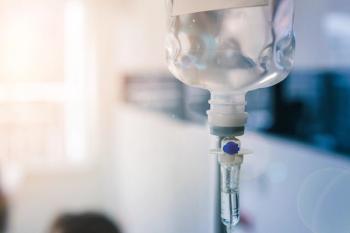
Radiation Therapy: Fewer Adverse Events of CAR T-Cell Therapy in Non-Hodgkin Lymphoma
Study indicated that patients who received radiation 30 days or fewer before their CAR T-cell infusion did not experience serious cytokine release syndrome or neurotoxicity.
A new study from the Abramson Cancer Center at the University of Pennsylvania has found that treating patients with non-Hodgkin lymphoma (NHL) with radiation therapy as an additional treatment while they wait for their chimeric antigen receptor (CAR) T-cells to be manufactured may reduce the risk of adverse effects from CAR T-cell therapy once it is administered.
The study found that patients who received radiation 30 days or fewer before their CAR T-cell infusion did not experience serious cytokine release syndrome (CRS) or neurotoxicity, the typical adverse events associated with the gene therapy.
“Our findings suggest that not only does radiation not interfere with the efficacy of CAR T, it may even carry a benefit for NHL patients,” said the study’s senior author John Plastaras, MD, PhD, an associate professor of Radiation Oncology at Penn.
The study evaluated medical records from 31 patients receiving either of the 2 commercial versions of the therapy that have been approved for use by the FDA in NHL and categorized them into 3 groups. One group received radiation after their cells were collected for CAR T-cell manufacturing, but before their infusion, a period of 30 days or less. A second group of patients had received radiation at some point during their cancer treatment but not specifically as a bridging therapy before CAR T-cell infusion. A third group received no radiation therapy at all.
None of the 5 patients who received radiation while awaiting manufacturing experienced any grade 3 or higher adverse event, including neurotoxicity or CRS. Of the 7 patients who had a prior history of radiation, only 1 experienced grade 3 or higher CRS. Among the 19 patients who did not receive any radiotherapy, 5 experienced grade 3 or higher CRS. Radiation status was not associated with a decrease in overall survival or progression free survival.
CAR T-cell therapy acts by modifying patients’ own immune T-cells, which are collected and reprogramed to seek and the destroy the patients’ own cancer cells. After being infused back into patients’ bodies, these CAR-expressing T cells both multiply and attack, targeting cells that express a protein called CD19. Tests reveal that this group of hunter cells can grow to more than 10,000 new cells for each single engineered cell patients receive, producing high remission rates. They can also survive in the body for years. There are currently 2 commercial versions of the therapy approved for use by the FDA in NHL.
The researchers are currently developing a model to use that will use these findings to help predict CAR T-cell toxicities, specifically relying on data from PET scans and other variables.
Reference
- Radiation May Lower Potential for Side Effects of CAR T Therapy in Non-Hodgkin’s Lymphoma [press release]. Philadelphia, PA. Penn Medicine News website. Published September 17, 2019. https://www.pennmedicine.org/news/news-releases/2019/september/radiation-may-lower-potential-for-side-effects-of-car-t-therapy-in-nonhodgkins-lymphoma. Accessed September 19, 2019.
Newsletter
Stay informed on drug updates, treatment guidelines, and pharmacy practice trends—subscribe to Pharmacy Times for weekly clinical insights.


















































































































































































































